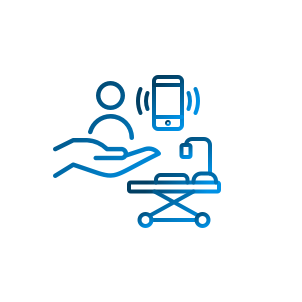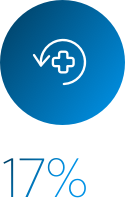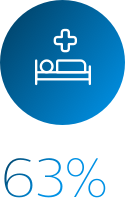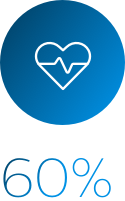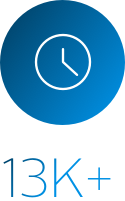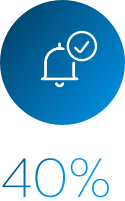
Is your patient monitoring system keeping up with your acute care needs and concerns?

Do you worry about a cyberattack compromising your patient monitoring system and putting patients at risk?
You’re not alone. Health data breaches and malicious online attacks like ransomware are two of the biggest worries for health systems and put patient lives at risk.1,2 Healthcare teams want to stay informed of at-risk patients and feel confident that they can access patient data and insights from any device and any location without compromising security.
Building and maintaining secure systems is a never-ending challenge, and you need a partner who can help you prepare for the future today. Cybersecurity assessments and scalable service updates that enhance security while helping to optimize patient care are just two of the ways Philips can help.
You’re not alone. Health data breaches and malicious online attacks like ransomware are two of the biggest worries for health systems and put patient lives at risk.1,2 Healthcare teams want to stay informed of at-risk patients and feel confident that they can access patient data and insights from any device and any location without compromising security. Building and maintaining secure systems is a never-ending challenge, and you need a partner who can help you prepare for the future today. Cybersecurity assessments and scalable service updates that enhance security while helping to optimize patient care are just two of the ways Philips can help.
Having full confidence in the current security of your patient monitoring services is a good thing. As systems evolve and healthcare teams desire more secure, mobility-enhanced patient monitoring, it’s important to stay ahead of changing needs. Even the most secure systems may benefit from the latest innovations. Building and maintaining secure systems is a never-ending challenge, and you may value a partner who helps you keep up with the latest innovations. Cybersecurity assessments and scalable service updates that enhance security while helping to optimize patient care are just two of the ways Philips can help.
1. HIPAA Journal. 2020 healthcare data breach report. Accessed July 27, 2021. www.hipaajournal.com/2020-healthcare-data-breach-report-us/ [p3, last paragraph] 2. Riggi J. The importance of cybersecurity in protecting patient safety. Accessed July 27, 21, 2021. www.aha.org/center/cybersecurity-and-risk-advisory-services /importance-cybersecurity-protecting-patient-safety [p1, paragraph 6]

With the influx of patient data from so many sources, are you ever concerned that alerts and insights about patients could be missed?
Healthcare teams often describe the stress of processing vast amounts of patient data without the full benefit of clear, actionable insights. Gaps or silos in patient data are also a serious concern, especially when patients move between care settings.
You may be looking for ways your healthcare teams can access more actionable insights about patient data while enabling data to securely flow throughout the care continuum. There are innovative solutions that may help. For example, at Philips, we recently united our patient management expertise with the medical device integration capabilities of Capsule, a Philips company (formerly Capsule Technologies).
Care teams often describe the stress of processing vast amounts of patient data without the full benefit of clear, actionable insights. Gaps or silos in patient data are also a serious concern, especially when patients move between care settings.
You may be looking for ways your care teams can access more actionable insights about patient data while enabling data to securely flow throughout the care continuum. There are innovative solutions that may help. For example, at Philips, we recently united our patient management expertise with the medical device integration capabilities of Capsule, a Philips company (formerly Capsule Technologies).
Though you are not currently concerned, there may be a time when interoperability could pose a challenge for you, as it does for many healthcare teams.
Did you know: ✤ About 72% of physicians feel they lack information about their patients.1 ✤ With US hospitals averaging 10 to 15 connected medical devices per bed, consolidating disparate data is a challenge.2 ✤ 80% of serious medical errors involve miscommunication among care teams during patient transfers.3 Care teams often describe the stress of processing vast amounts of patient data without the full benefit of clear, actionable insights. Gaps or silos in patient data are also a serious concern, especially when patients move between care settings. If you are interested in exploring ways to improve integration, there are innovative solutions that may help. For example, at Philips, we recently united our patient management expertise with the medical device integration capabilities of Capsule, a Philips company (formerly Capsule Technologies).
References: 1. Quest Diagnostics. Stalled Progress on the Path to Value-Based Care: A Survey of Physicians and Health Plan Executives. 2018. 2. CyberMDX. The Big Healthcare CIO Factbook. HIMSS 2020. Accessed July 27, 2021. 3. Joint Commission Center for Transforming Healthcare releases targeted solutions for hand-off communications. Jt Comm Perspect. 2012;32(8):1,3. [pg 1, para 2]
https://images.health.questdiagnostics.com/Web/QuestDiagnosticsIncorporated/%7B67d434a3-0cbf-4683-b5f2-853179755911%7D_Quest_2018_VBC_Study-min_(1).pdf
https://himss20.mapyourshow.com/8_0/explore/collateral.cfm?type=whitepaper
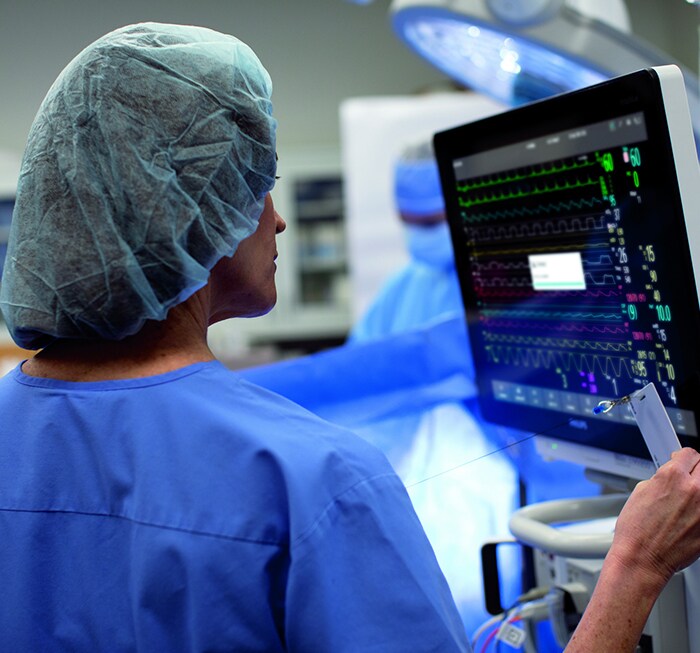
How would you assess your patient monitoring system when it comes to the following?
✤ Clinical workflow efficiency ✤ Detecting patient deterioration ahead of time ✤ Alarm management ✤ Interoperability of disparate systems ✤ Cybersecurity With these areas in mind, which best describes your current system?
When patient monitoring is optimized, you can help improve patient care and caregiver satisfaction by striving for:
✤ More efficient, clinically optimized workflows ✤ Access to predictive insights across all points of care ✤ Improved alarm management ✤Seamless, secure patient data flow across different systems You indicated interest in optimizing your current patient monitoring system. Philips Acute Patient Management can address your needs and challenges and help you build a secure, scalable, connected care system. Let’s talk about how we can collaborate to upgrade your system.
When acute patient monitoring is optimized, you can help improve patient care and caregiver satisfaction by striving for:
✤ More efficient, clinically optimized workflows ✤ Access to predictive insights across all points of care ✤ Improved alarm management ✤Seamless, secure patient data flow across different systems You indicated interest in optimizing your current patient monitoring system. Philips Acute Patient Management can address your needs and challenges and help you build a secure, scalable, connected care system. Let’s talk about how we can collaborate to upgrade your system.
Continuing to keep your patient monitoring system optimized benefits both patients and clinicians. Stay ahead of future needs and see what’s possible today with Philips.
With the latest cutting-edge features and updates, Philips Acute Patient Management has innovations that may be worth discovering. Let’s talk about new features that may be of interest to you.

